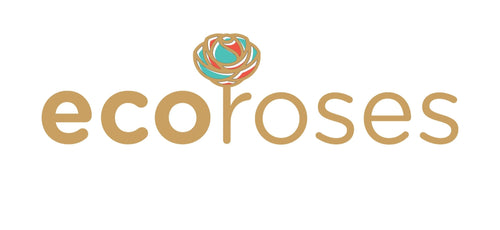Fine dining has always been about more than just taste-it’s an art form that stimulates all the senses. Michelin-starred chefs constantly push boundaries, turning meals into immersive experiences. One of the most intriguing trends in haute cuisine is the creative use of flowers. From subtle garnishes to bold, flavor-packed elements, edible flowers bring elegance, aroma, and artistry to the plate.
In this article, we’ll explore how Michelin chefs use flowers in gastronomy, the symbolism behind floral cuisine, and how you can embrace this trend at home. And if you’d like to add beauty to your own table, explore premium fresh floral designs that mirror the creativity and refinement of fine dining.
🌼 A Brief History of Flowers in Cuisine
Flowers have been used in cooking for centuries:
-
Ancient Romans flavored wines and sauces with violets and roses.
-
Indian cuisine incorporated hibiscus, marigold, and lotus in sweets and teas.
-
French patisserie popularized crystallized violets and rosewater.
Today, Michelin chefs continue this tradition, elevating flowers from garnish to starring ingredients.
🌸 Why Chefs Use Flowers in Fine Dining
Flowers aren’t just decorative. They bring multiple benefits to high-level cuisine:
-
Flavor Profiles: Peppery nasturtiums, citrusy marigolds, and sweet violets expand the palate.
-
Aromatics: Lavender, jasmine, and roses add fragrance, enhancing the dining experience.
-
Texture: Petals and crystallized blooms provide contrast to rich sauces and meats.
-
Symbolism: Flowers carry cultural meaning, adding narrative to a dish.
-
Visual Artistry: Vibrant colors elevate plating to museum-level beauty.
🌼 Signature Flowers Michelin Chefs Use
🌹 Roses
Used in syrups, reductions, and desserts. Rose essence pairs well with chocolate, berries, and Middle Eastern spices.
🌼 Marigolds
Known for their zesty, citrus-like flavor. Often used in salads and seafood dishes.
🌸 Nasturtiums
Bright and peppery, nasturtiums are popular for their visual impact and taste, often used to accent delicate dishes.
🌺 Hibiscus
Provides tartness and vivid red color for sauces, cocktails, and sorbets.
🌸 Lavender
Aromatic and calming, used in desserts, teas, and sauces for lamb or poultry.
🌼 Chrysanthemums
Used in Asian fine dining for their herbal, earthy flavor.
🌸 Orchids
Primarily decorative, but edible varieties add elegance to desserts and cocktails.
🌺 Michelin Techniques with Flowers
1. Infusions
Chefs steep petals in creams, syrups, or broths to extract flavor.
Example: Rose-infused panna cotta or lavender crème brûlée.
2. Crystallization
Flowers coated in sugar create stunning garnishes for cakes and pastries.
3. Pickling and Fermentation
Preserving flowers like chrysanthemums adds tangy complexity to savory dishes.
4. Floral Oils and Butters
Chefs infuse oils or butters with blossoms to subtly flavor breads, sauces, or proteins.
5. Cocktail Garnishes
Edible orchids, hibiscus, or violets enhance mixology presentations.
🌼 Iconic Michelin Dishes Featuring Flowers
-
Alain Ducasse: Uses rose and hibiscus in elegant French desserts.
-
René Redzepi (Noma): Celebrated for foraging flowers and integrating wild blossoms into experimental dishes.
-
Heston Blumenthal: Known for edible flower gardens in theatrical tasting menus.
-
Massimo Bottura: Blends symbolic Italian flowers into artful plating and storytelling.
🌸 The Symbolism of Flowers in Fine Dining
Flowers aren’t only sensory-they’re cultural and symbolic:
-
Roses: Love and passion.
-
Lotus: Purity and rebirth (common in Asian cuisine).
-
Sunflowers: Optimism and harvest.
-
Cherry Blossoms: Fleeting beauty, a central Japanese theme.
Michelin chefs often select flowers not just for taste, but for the emotional or cultural story they tell.
🌺 How to Use Flowers at Home Like a Michelin Chef
-
Start with Safe Edible Flowers → Nasturtiums, pansies, violets, lavender, marigolds.
-
Experiment with Infusions → Make floral teas, syrups, or butters.
-
Pair Thoughtfully → Use floral notes to balance richness (e.g., lavender with chocolate).
-
Focus on Presentation → Use color and shape to elevate your plating.
-
Keep It Fresh → Always use pesticide-free, food-grade flowers.
🌸 Final Thoughts
Michelin chefs use flowers not only to beautify a plate, but to transform dining into a multisensory, cultural, and emotional journey. Flowers add flavor, aroma, symbolism, and artistry that make each dish unforgettable.
While you may not dine at a three-star Michelin restaurant every day, you can bring a touch of floral elegance into your life. Explore stunning fresh floral designs that inspire creativity, beauty, and a little bit of fine-dining magic at home.


